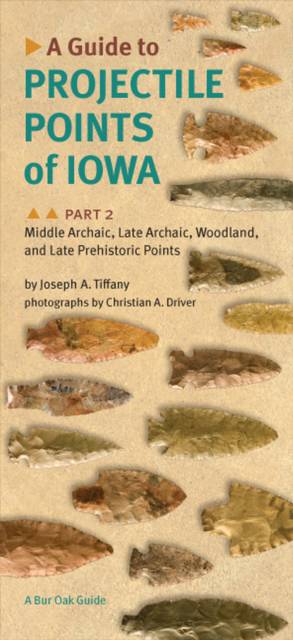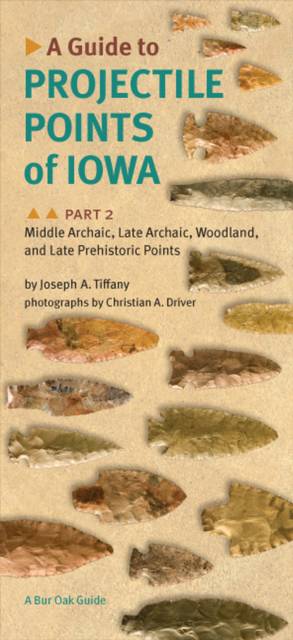
- Retrait gratuit dans votre magasin Club
- 7.000.000 titres dans notre catalogue
- Payer en toute sécurité
- Toujours un magasin près de chez vous
- Retrait gratuit dans votre magasin Club
- 7.000.0000 titres dans notre catalogue
- Payer en toute sécurité
- Toujours un magasin près de chez vous
A Guide to Projectile Points of Iowa, Part 2
Middle Archaic, Late Archaic, Woodland, and Late Prehistoric Points
Joseph A Tiffany
13,95 €
+ 27 points
Description
"Projectile point" is a collective term for spear and dart points, arrowheads, and hafted knives. The many Native Americans who have inhabited Iowa shaped points primarily of various cherts and chalcedonies found locally or traded regionally. The single point types illustrated in this two-part guide, the first to provide color photographs to scale for all types found in Iowa, show the wide range of variability as forms evolved from the Paleoindian period, 11,100-10,750 BC, to the Late Prehistoric period, AD 1000-1200. The two beautifully illustrated parts depict a total of sixty-one full-size stone point types in color by archaeological period. References are provided for those wishing to learn more about each type shown. Archaeologist Joseph Tiffany lists the stone type for each point as well as its estimated range of use based on calibrated radiocarbon age, catalog number, and the county where it was found. By providing actual-size color images of the typed points, each part is very easy to use in the field, lab, or classroom. From the highly finished Clovis points of the Paleoindian period to the delicate notched and stemmed points of the Woodland period, these tangible remnants of vanished cultures reveal the huge changes in the lifeways of Iowa's native populations over time. Lay and professional archaeologists, collectors, students, and enthusiasts will appreciate the beauty of the photos and the usefulness of the information in this pocket guide to Iowa projectile points.
Spécifications
Parties prenantes
- Auteur(s) :
- Editeur:
Contenu
- Nombre de pages :
- 16
- Langue:
- Anglais
- Collection :
Caractéristiques
- EAN:
- 9781587298288
- Date de parution :
- 01-10-09
- Format:
- Livre broché
- Dimensions :
- 112 mm x 241 mm
- Poids :
- 68 g

Les avis
Nous publions uniquement les avis qui respectent les conditions requises. Consultez nos conditions pour les avis.






